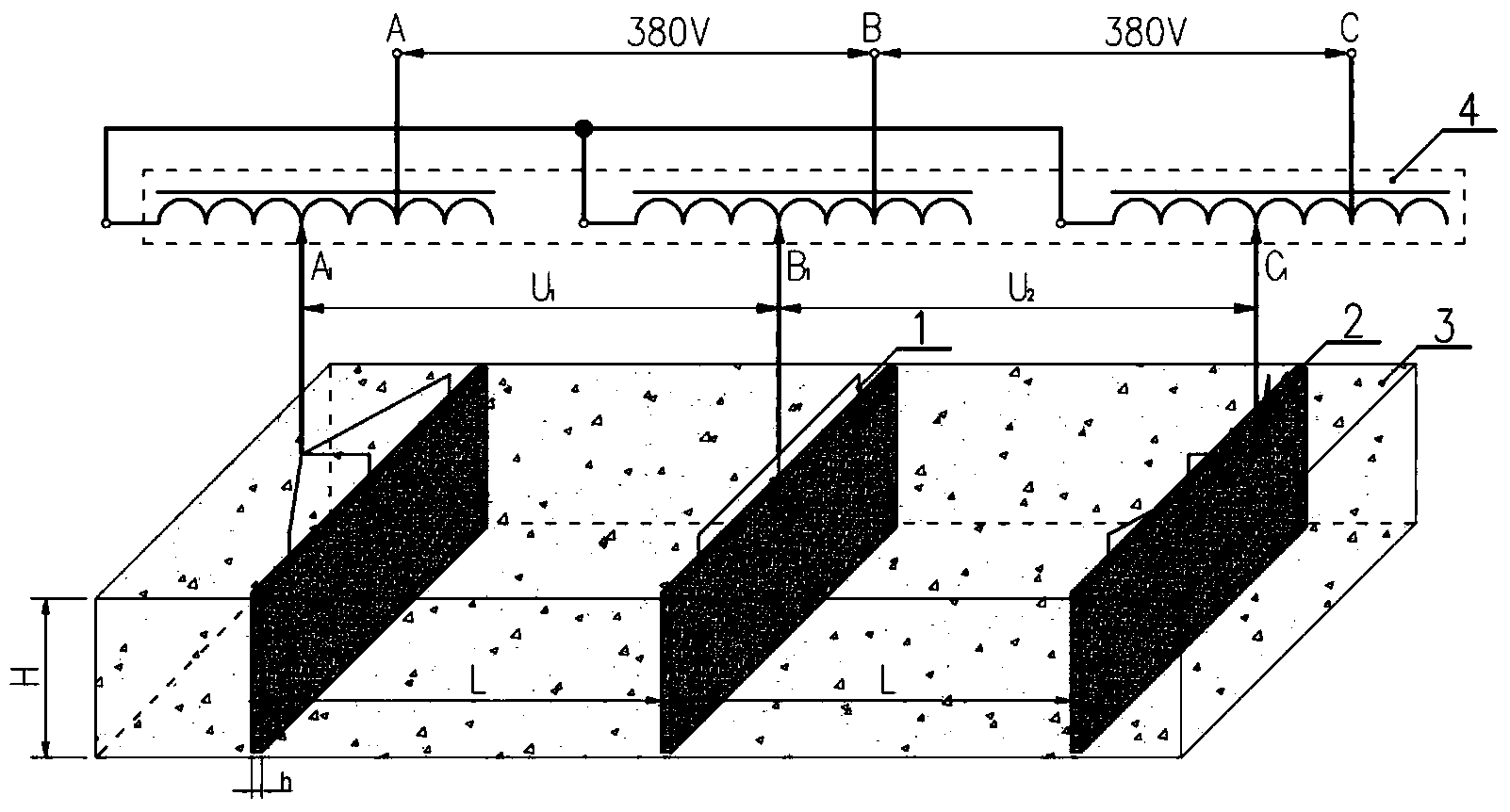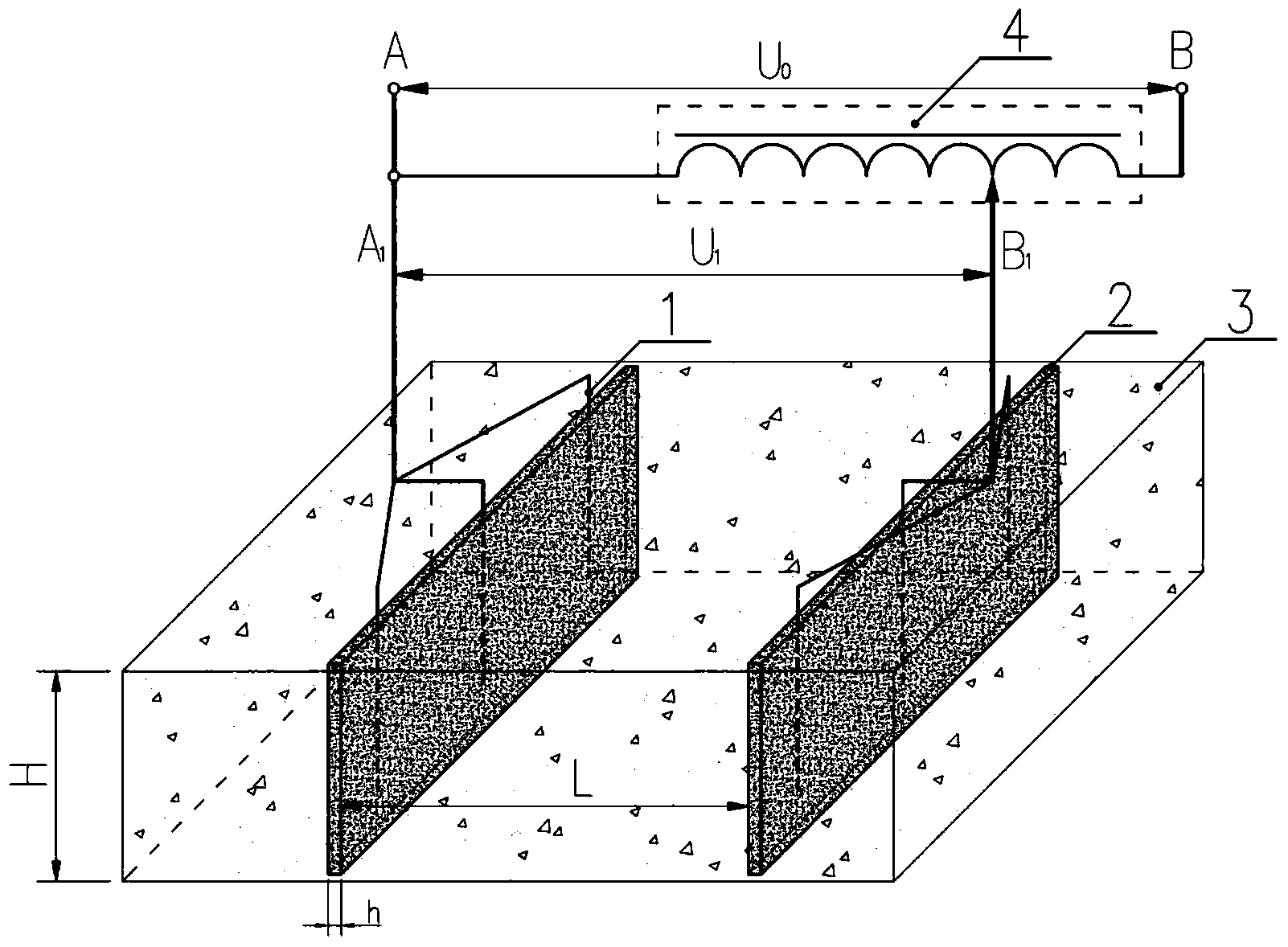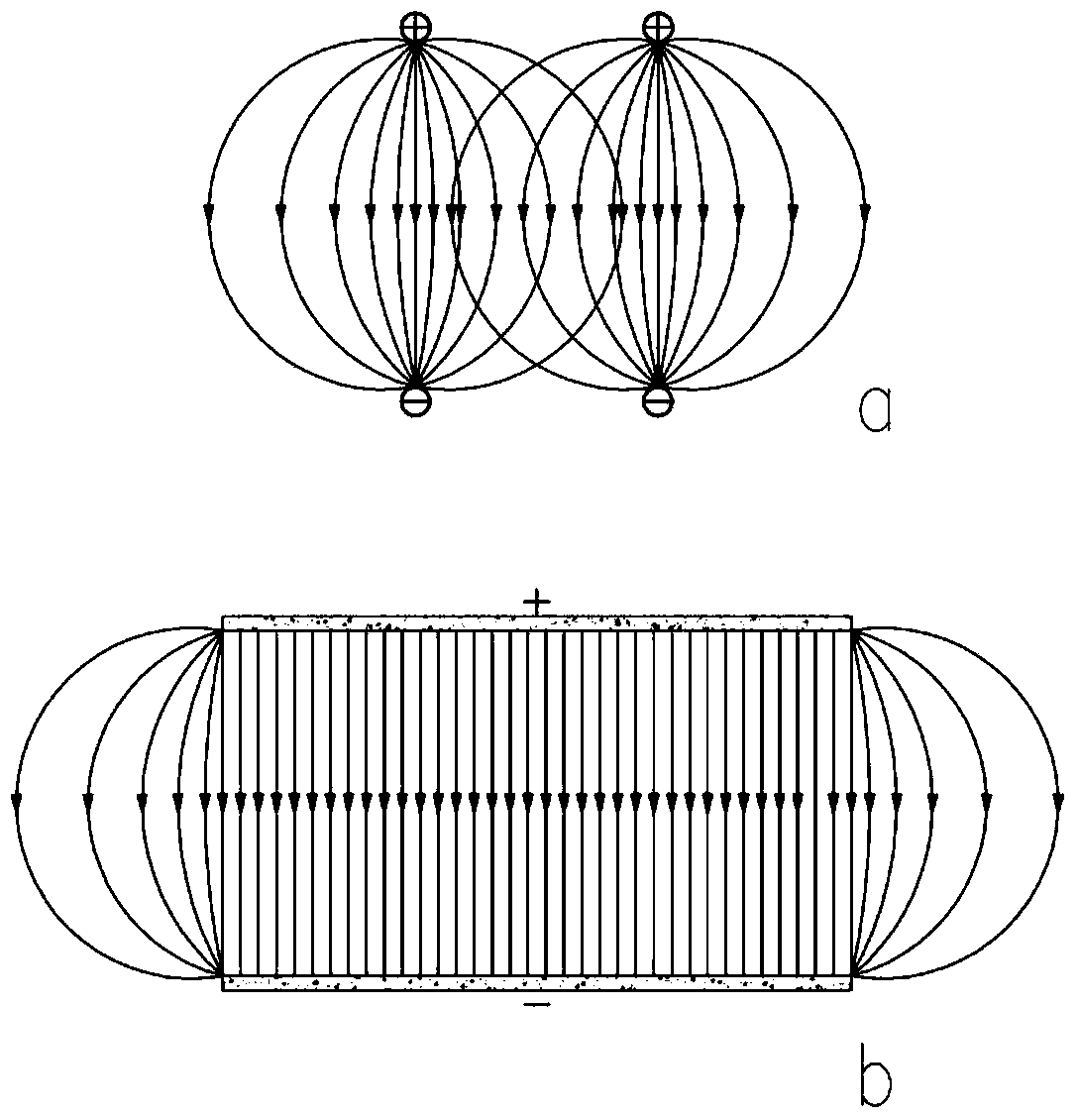Method and device for obtaining uniform electric field for electrically repairing polluted soil
A technology of electrodynamic repair and uniform electric field, which is applied in the restoration of polluted soil, etc. It can solve the problems of electric restoration of polluted soil, difficulty in forming a uniform electric field, and inability to solve the distribution of electric field, so as to achieve good restoration effect, low cost and save time and cost effects
- Summary
- Abstract
- Description
- Claims
- Application Information
AI Technical Summary
Problems solved by technology
Method used
Image
Examples
Embodiment approach 1
[0025] according to figure 1 , taking the electric remediation technology of in-situ thermal desorption of soil to remediate organically polluted soil as an example to further illustrate, the initial voltage between A-B-C is 380V from the mains, and through a three-phase voltage regulating transformer, A 1 -B 1 -C 1 Between voltage U 1 or U 2 Make adjustments according to the repair situation, and the adjustment range is 20-480V. in A 1 -B 1 -C 1 U 1 or U 2After the voltage is applied, due to the existence of the soil's own resistance, the soil will heat itself between the electrodes. The heating of the soil will accelerate the volatilization of organic matter, and then use the extraction wells (not shown in the figure) arranged on the site to extract the organic matter from the ground for treatment, so as to achieve the purpose of repairing the soil. Electrokinetic healing and electric heating are performed by controlling the voltage on the electrodes and / or the cur...
Embodiment approach 2
[0027] according to figure 2 , taking the electrodynamic remediation technology of soil in-situ remediation of heavy metal-contaminated soil as an example to further illustrate, the voltage between A-B can be adjusted at the voltage U through the DC power supply voltage regulator according to the remediation situation. 0 or U 1 Make adjustments, the adjustment range is 20-600V, and the preferred voltage gradient is 1v / cm. in A 1 -B 1 U 1 After the voltage is applied, the soil acts as a conductor, and a DC electric field is formed between the two electrodes. Since the surface of soil particles has an electric double layer, and the ions or particles in the pore solution are charged, the aqueous solution in the soil pores under the electric field will generate electroosmotic flow and the charged ions will migrate. The main material migration includes electroosmosis, electromigration, and free diffusion. And electrophoresis, the superposition of multiple migration movements ...
Embodiment approach 3
[0029] according to figure 2 , take the electric remediation technology of in-situ remediation of phenol-contaminated soil in sandy soil as an example to further illustrate, the voltage between A-B can be adjusted according to the remediation situation through the DC power voltage regulator at the voltage U 0 or U 1 Make adjustments, the adjustment range is 20-600V, the preferred voltage gradient is 1v / cm, and the control current is at mA level. In the sandy polluted soil, the water content is 10-19%, and the initial microorganisms are artificially screened high-efficiency phenol bacteria with a concentration of 1.5×10 9 per gram of dry soil. The polarity is switched regularly, and the switching interval is generally 3 to 12 hours per time. The system runs continuously for 10 days. The average decomposition efficiency of phenol in the soil is about 65%, which is much higher than the degradation effect without an electric field. Comparing the switching frequencies of differ...
PUM
 Login to View More
Login to View More Abstract
Description
Claims
Application Information
 Login to View More
Login to View More - R&D
- Intellectual Property
- Life Sciences
- Materials
- Tech Scout
- Unparalleled Data Quality
- Higher Quality Content
- 60% Fewer Hallucinations
Browse by: Latest US Patents, China's latest patents, Technical Efficacy Thesaurus, Application Domain, Technology Topic, Popular Technical Reports.
© 2025 PatSnap. All rights reserved.Legal|Privacy policy|Modern Slavery Act Transparency Statement|Sitemap|About US| Contact US: help@patsnap.com



